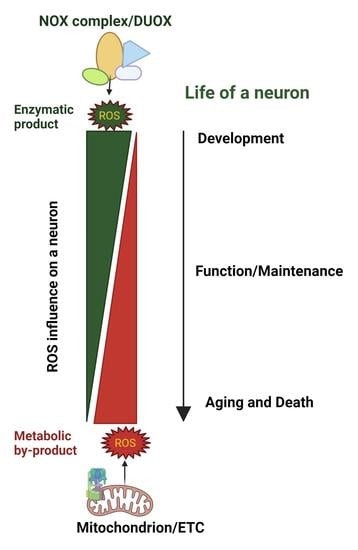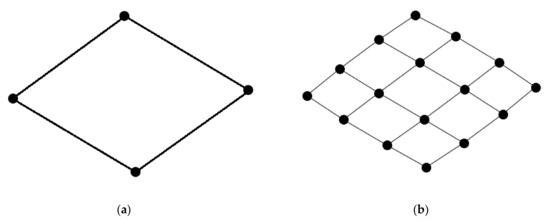Neurons – Structure & Function
A topical collection in NeuroSci (ISSN 2673-4087).
Viewed by 18816
Share This Topical Collection
Editor
Topical Collection Information
Dear Colleagues,
The neuronal cells of animals have an untold history in the evolution of life. They are thought to have emerged at least twice in animals. Although neurons have similarities at the cellular level across the higher metazoans, their ability to interconnect allows for the formation of complex systems and functions. These neural functions include sensation of the environment, motor control, and an undefined number of behaviors.
The study of neural systems occurs at many biological scales of organization. One approach is at the cellular level, to study the morphology of neurons and their role. Neuron anatomy includes knowledge of the taxonomy of these cell types and their organization at the tissue level, but it is also of interest to determine their role in the different hierarchical levels of a system. These levels vary from the synapse up to the scale of communication of information across regions of a system.
This Topical Collection is dedicated to the understanding of neural systems from the perspective of the neuron and their roles. This is mainly a reductionist perspective of the biological sciences, but the synthesis of neuron structure with their function may include an approach that is cross-disciplinary and neuroscientific. An approach may include conventional imaging techniques, higher scale approaches from the neurosciences, or statistical methods based on neuron databases, such as at neuromorpho.org.
Dr. Bob Friedman
Collection Editor
Manuscript Submission Information
Manuscripts should be submitted online at www.mdpi.com by registering and logging in to this website. Once you are registered, click here to go to the submission form. Manuscripts can be submitted until the deadline. All submissions that pass pre-check are peer-reviewed. Accepted papers will be published continuously in the journal (as soon as accepted) and will be listed together on the collection website. Research articles, review articles as well as short communications are invited. For planned papers, a title and short abstract (about 100 words) can be sent to the Editorial Office for announcement on this website.
Submitted manuscripts should not have been published previously, nor be under consideration for publication elsewhere (except conference proceedings papers). All manuscripts are thoroughly refereed through a single-blind peer-review process. A guide for authors and other relevant information for submission of manuscripts is available on the Instructions for Authors page. NeuroSci is an international peer-reviewed open access quarterly journal published by MDPI.
Please visit the Instructions for Authors page before submitting a manuscript.
The Article Processing Charge (APC) for publication in this open access journal is 1000 CHF (Swiss Francs).
Submitted papers should be well formatted and use good English. Authors may use MDPI's
English editing service prior to publication or during author revisions.
Keywords
- neuron
- synapse
- neural systems
- evolution of neurons
- morphology of neurons
- neuron function
Published Papers (5 papers)
Open AccessArticle
A Concept-Value Network as a Brain Model
by
Kieran Greer
Viewed by 333
Abstract
This paper suggests a statistical framework for describing the relations between the physical and conceptual entities of a brain-like model. Features and concept instances are put into context, where the paper suggests that features may be the electrical wiring; although, chemical connections are
[...] Read more.
This paper suggests a statistical framework for describing the relations between the physical and conceptual entities of a brain-like model. Features and concept instances are put into context, where the paper suggests that features may be the electrical wiring; although, chemical connections are also possible. With this idea, the actual length of the connection is important, because it is related to firing rates and neuron synchronization, but the signal type is less important. The paper then suggests that concepts are neuron groups that link feature sets and concept instances are determined by chemical signals from those groups. Therefore, features become the static horizontal framework of the neural system and concepts are vertically interconnected combinations of these. With regards to functionality, the neuron is then considered to be functional, and the more horizontal memory structures can even be glial. This would also suggest that features can be distributed entities and not concentrated to a single area. Another aspect could be signal ‘breaks’ that compartmentalise a pattern and may help with neural binding.
Full article
►▼
Show Figures
Open AccessCommunication
Activation of Extracellular Signal-Regulated Kinase 2 and cAMP Response Element-Binding Protein in Cultured Neurons by the Macrocyclic Ellagitannin Oenothein B
by
Satoshi Okuyama, Morio Yoshimura, Yoshiaki Amakura, Mitsunari Nakajima and Yoshiko Furukawa
Viewed by 1665
Abstract
(1) Background: The findings of our recent in vivo study indicated that the oral administration of oenothein B, a unique macrocyclic ellagitannin, activated extracellular signal-regulated kinase (ERK) 2 and cAMP response element-binding protein (CREB) in the mouse brain. A large hydrophilic oenothein B
[...] Read more.
(1) Background: The findings of our recent in vivo study indicated that the oral administration of oenothein B, a unique macrocyclic ellagitannin, activated extracellular signal-regulated kinase (ERK) 2 and cAMP response element-binding protein (CREB) in the mouse brain. A large hydrophilic oenothein B is unable to reach the brain, suggesting that any metabolite(s) of oenothein B might function in the brain. (2) Results: The addition of oenothein B to the culture medium of rat cortical neurons induced the prompt and significant activation of ERK2 and CREB. (3) Conclusions: The activation of ERK2 and CREB is crucial for synaptic transmission and learning/memory formation in the brain. The present results suggest oenothein B exerts neurotrophic/neuroprotective effects in the brain through the modulation of neuronal signaling pathways, if it reaches the brain.
Full article
►▼
Show Figures
Open AccessReview
Reactive Oxygen Species: Angels and Demons in the Life of a Neuron
by
Kasturi Biswas, Kellianne Alexander and Michael M. Francis
Cited by 30 | Viewed by 7783
Abstract
Reactive oxygen species (ROS) have emerged as regulators of key processes supporting neuronal growth, function, and plasticity across lifespan. At normal physiological levels, ROS perform important roles as secondary messengers in diverse molecular processes such as regulating neuronal differentiation, polarization, synapse maturation, and
[...] Read more.
Reactive oxygen species (ROS) have emerged as regulators of key processes supporting neuronal growth, function, and plasticity across lifespan. At normal physiological levels, ROS perform important roles as secondary messengers in diverse molecular processes such as regulating neuronal differentiation, polarization, synapse maturation, and neurotransmission. In contrast, high levels of ROS are toxic and can ultimately lead to cell death. Excitable cells, such as neurons, often require high levels of metabolic activity to perform their functions. As a consequence, these cells are more likely to produce high levels of ROS, potentially enhancing their susceptibility to oxidative damage. In addition, because neurons are generally post-mitotic, they may be subject to accumulating oxidative damage. Thus, maintaining tight control over ROS concentration in the nervous system is essential for proper neuronal development and function. We are developing a more complete understanding of the cellular and molecular mechanisms for control of ROS in these processes. This review focuses on ROS regulation of the developmental and functional properties of neurons, highlighting recent in vivo studies. We also discuss the current evidence linking oxidative damage to pathological conditions associated with neurodevelopmental and neurodegenerative disorders.
Full article
►▼
Show Figures
Open AccessArticle
Detecting Square Grid Structure in an Animal Neuronal Network
by
Robert Friedman
Cited by 1 | Viewed by 3049
Abstract
An animal neural system ranges from a cluster of a few neurons to a brain of billions. At the lower range, it is possible to test each neuron for its role across a set of environmental conditions. However, the higher range requires another
[...] Read more.
An animal neural system ranges from a cluster of a few neurons to a brain of billions. At the lower range, it is possible to test each neuron for its role across a set of environmental conditions. However, the higher range requires another approach. One method is to disentangle the organization of the neuronal network. In the case of the entorhinal cortex in a rodent, a set of neuronal cells involved in spatial location activate in a regular grid-like arrangement. Therefore, it is of interest to develop methods to find these kinds of patterns in a neural network. For this study, a square grid arrangement of neurons is quantified by network metrics and then applied for identification of square grid structure in areas of the fruit fly brain. The results show several regions with contiguous clusters of square grid arrangements in the neural network, supportive of specialization in the information processing of the system.
Full article
►▼
Show Figures
Open AccessReview
Cognition as a Mechanical Process
by
Robert Friedman
Cited by 1 | Viewed by 3399
Abstract
Cognition is often defined as a dual process of physical and non-physical mechanisms. This duality originated from past theory on the constituent parts of the natural world. Even though material causation is not an explanation for all natural processes, phenomena at the cellular
[...] Read more.
Cognition is often defined as a dual process of physical and non-physical mechanisms. This duality originated from past theory on the constituent parts of the natural world. Even though material causation is not an explanation for all natural processes, phenomena at the cellular level of life are modeled by physical causes. These phenomena include explanations for the function of organ systems, including the nervous system and information processing in the cerebrum. This review restricts the definition of cognition to a mechanistic process and enlists studies that support an abstract set of proximate mechanisms. Specifically, this process is approached from a large-scale perspective, the flow of information in a neural system. Study at this scale further constrains the possible explanations for cognition since the information flow is amenable to theory, unlike a lower-level approach where the problem becomes intractable. These possible hypotheses include stochastic processes for explaining the processes of cognition along with principles that support an abstract format for the encoded information.
Full article
►▼
Show Figures










